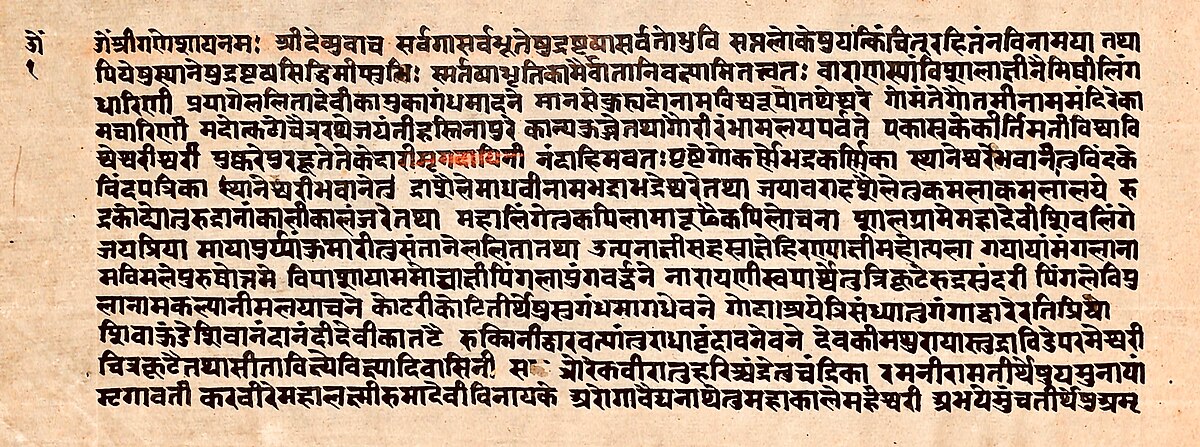Matsya Purana English Pdf

The Goddess Ambika or Durga Leading the Eight Matrikas in Battle Against the Demon Raktabija, Folio from Devi Mahatmya, Markandeya Purana. The Puranas (Sanskrit: पुराण purāṇa, 'of ancient times') are Hindu religious texts that are part of the Vedas. They contain narratives about the history of the Universe from creation to destruction and the genealogies of kings, heroes, sages, and deities. Some of the Puranas are discourses on cosmology, geography and Hindu philosophy. They are usually written in the form of a dialogue. Vyasa, the narrator of the Mahabharata, is traditionally considered the compiler of the Puranas. The earliest written versions were compiled during the time of the Gupta Empire (4 - 6 century CE) and much of the material may be dated, through historical references and comparative studies, to this period and the succeeding centuries.
The text and tradition asserts that Matsya Purana had 20,000 verses. However, extant manuscripts contain between 13,000 to 15,000 verses. The Padma Purana categorizes Matsya Purana as a Tamas Purana, or one that glorifies Shiva or Agni. The Purana narrates the story of Matsya, the first of ten major Avatars of Vishnu. Book: Matsya Purana Author: Sri Vyasadeva (Vedvyas) Language: Sanskrit (with Hindi Translation) Published by: Munshi NavalKishore (C.I.E. Printing Press. Skip to main content Search the history of over 349 billion web pages on the Internet.
The texts were collected from all over India and because of the similarities that are found throughout the texts, it is not possible to trace the line of influence of one Purana upon another, so the corpus is best viewed as a synchronous whole. The date of the earliest written texts does not define the date of origin of the Puranas.
They were transmitted orally before being written down, while at the same time, they have been modified well into the 16th century and beyond. Serious work on the Puranas began when the All India Kashiraj Trust was formed under the patronage and guidance of Dr. Vibhuti Narayan Singh, the Maharaja of Kashi, which, in addition to producing critical editions of the Puranas, also published the journal Puranam. • • ↑, p. 359 • ↑, p. 247 •, p. 2324 •, p. 657 • Brhadaranyaka Upanisad 2.4.10, 4.1.2, 4.5.11.
Satapatha Brahmana (SBE, Vol. 98, 369)., pp. 160,249 • ↑, pp. 30-54 •, p. 249 and the Satapatha Brahmana 11.5.6.8. And 13.4.3.13. Sacred Books of the East SBE Vol. 98, 369 • Matsya Purana 53.65 •, p. 248 •, p. 85-100 • Pargiter 1979 • P.L.
Bhargava 1971, India in the Vedic Age, Lucknow: Upper India Publishing; Talageri 1993, 2000; Subhash Kak, 1994, The astronomical code of the Rgveda •, p. 177 • Pliny: Naturalis Historia 6:59; Arrian: Indica 9:9 • Elst 1999, with reference to Bernard Sergent •, p. 373 •, p. 752, column 3, under the entry Bhagavata. • •, pp. Halid ziya ushakligilj zapretnaya lyubovj knigu. 59-83 • • Padma Purana, Uttara-khanda, 236.18–21 • R. Hazra, Studies in the Upapuranas, vol. I, Calcutta, Sanskrit College, 1958. Studies in the Upapuranas, vol.
II, Calcutta, Sanskrit College, 1979. Studies in Puranic Records on Hindu Rites and Customs, Delhi, Banarsidass, 1975. Ludo Rocher, The Puranas - A History of Indian Literature Vol. 3, Wiesbaden: Otto Harrassowitz, 1986. •, p. 304 • • • `Verbal Narratives: Performance and Gender of the Padma Purana, by T.N. Sankaranarayana in, pp. 225-234 • •, pp. 125-142 • See for example Castes and Tribes of Southern India vol.